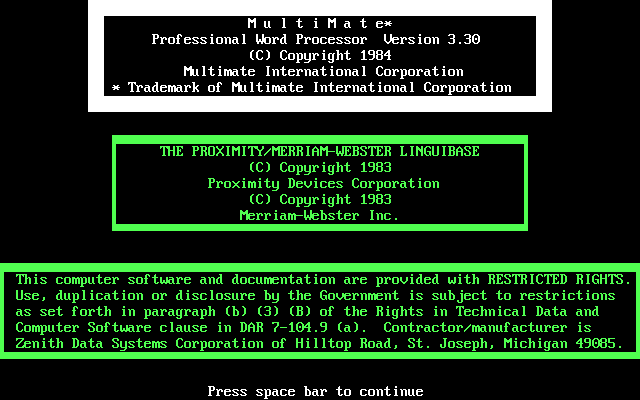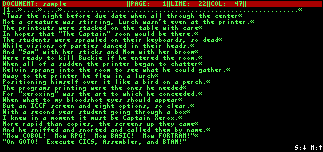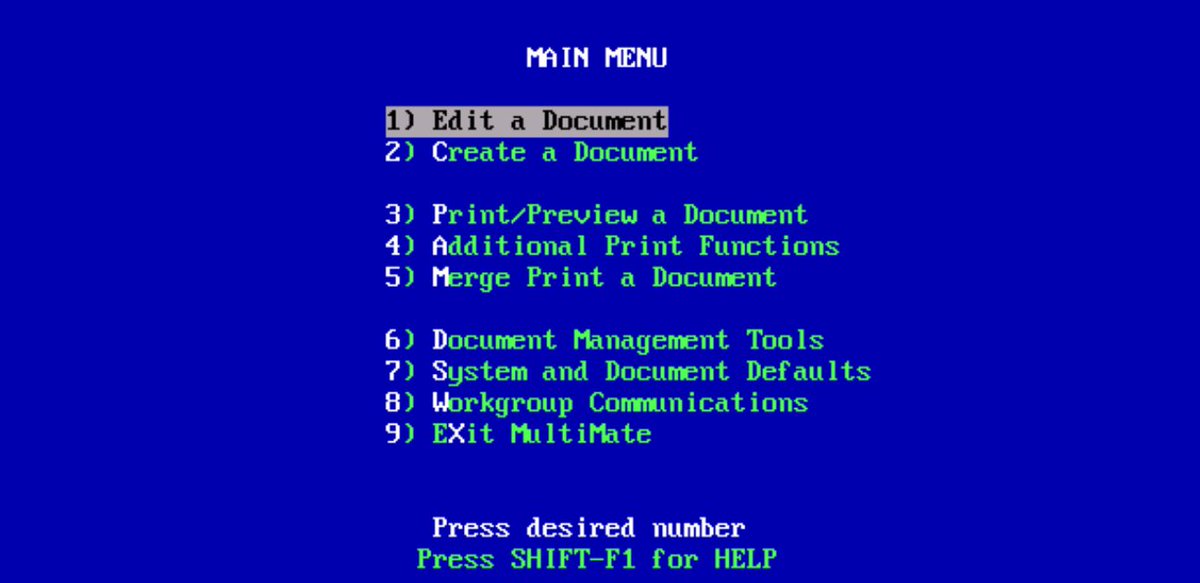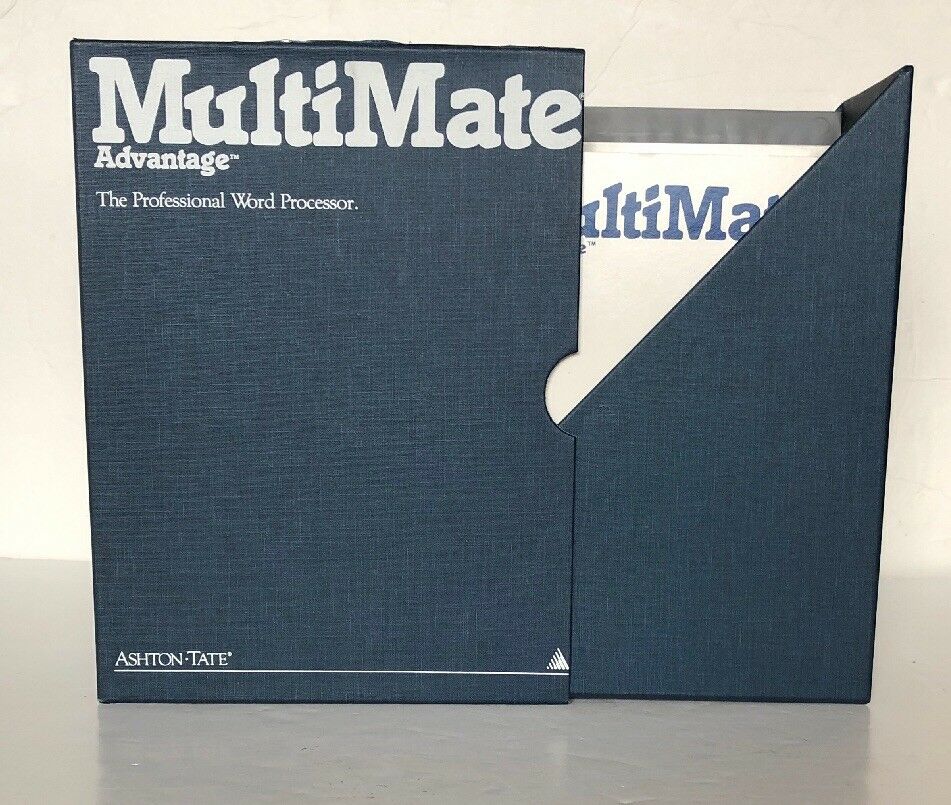Ashton-Tate
MultiMate
At the dawn of word processing was a company called Wang. They made dedicated workstations that provided word processing capabilities. Large corporations bought into Wang in their droves, but with the introduction of the IBM PC with its broader flexibility as a business tool, these companies saw the appeal and were looking to migrate.
As a PC-based word processor, MultiMate began life as WordMate, created by W.H. Jones. It was designed from the ground up to be quick and easy to use for those with skills on Wang workstations. Companies saw the benefit of not having to retrain their staff, and bought WordMate for their shiny new IBM PCs. The company renamed themselves SoftWord Systems, and then again to MultiMate International, while renaming the core product to MultiMate.
Adverts stated that "MultiMate mimic[ked] the features and functions of a dedicated system, and that it was modeled after the Wang word processor. It came with a keyboard template for the 101-key IBM keyboard and a set of colour-coded stickers that guided the user with a combination of Ctrl, ALT and Shift keys combined with the function keys to perform tasks.
From mid-1983 and through 1984, sales went through the roof, with an end-of-year figure of $15M revenue. By early 1985, MultiMate International's installed base was as large as the former marker leader, WordStar's. In December of that year, Jones sold the product to Ashton-Tate for $20M, along with a number of other supporting products including a graphing tool called GraphLink, spelling and grammar checking, outlining, file conversion and even a hardware add-on card to allow file transfers from a Wang word processor to a PC. At that time, Ashton-Tate was considered one of the top three software publishers in the market, alongside Lotus Development Corp. and WordPerfect.
The final version of MultiMate shipped with a lot of these other software products packaged together, and was called MultiMate Advantage. This package directly competed with IBM's DisplayWrite 2 for DOS, and to a lesser extent, WordPerfect, Microsoft Word, and Samna Ami. It was aimed more at the corporate word processor user than the home user. With a full range of features including data management it was a good choice for heavy office workloads.
MultiMate Advantage II LAN was a network-enabled version of their flagship product, MultiMate Advantage II. It allowed document sharing, extended printing enhancements, customisable system defaults, and file and document locking. As with Advantage II, it also supported dBase merge. A typical package would permit its use on 5 workstations and 1 server, and came with a recommended retail price of $1,495 plus $150 for each additional workstation.
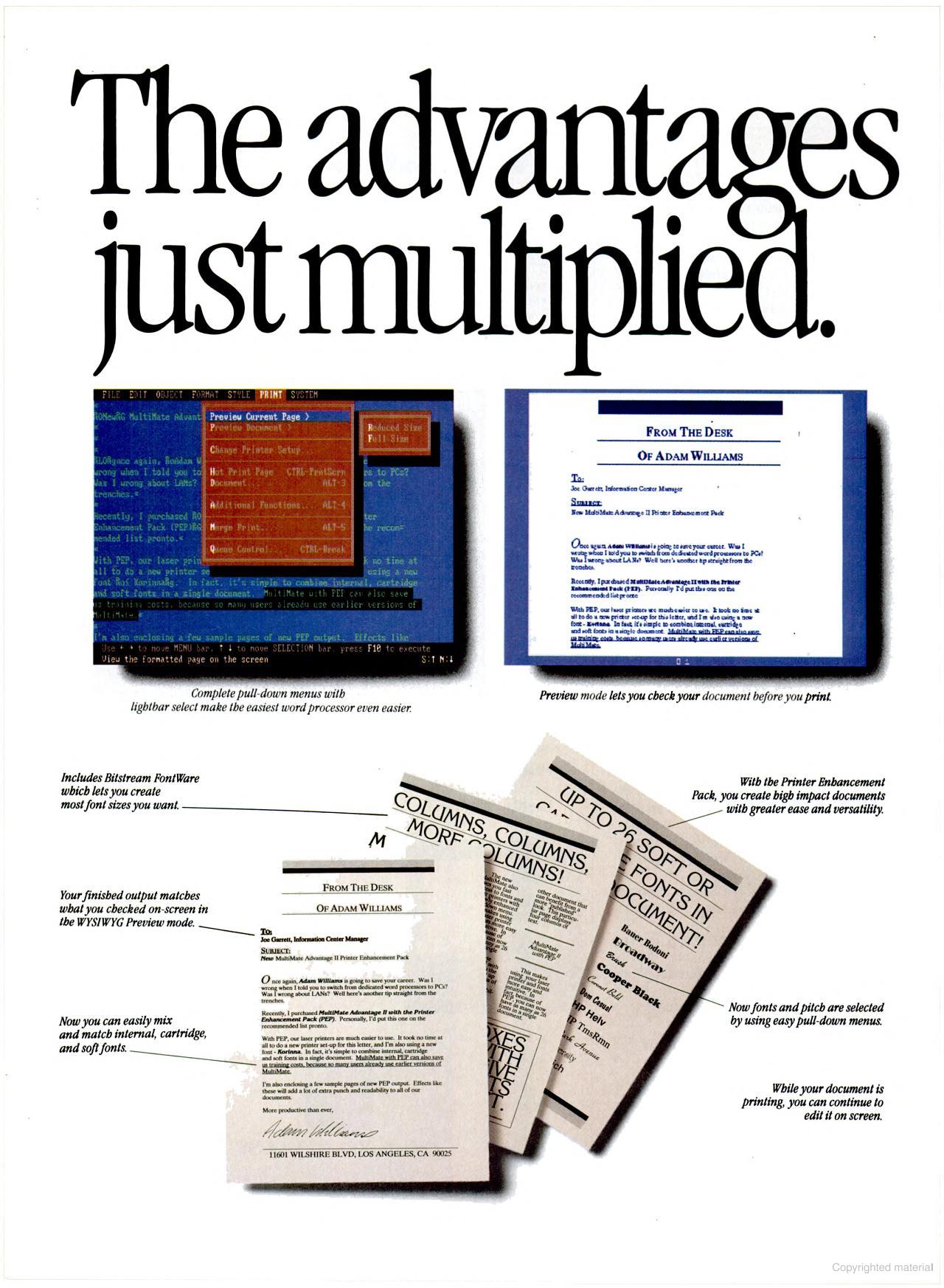
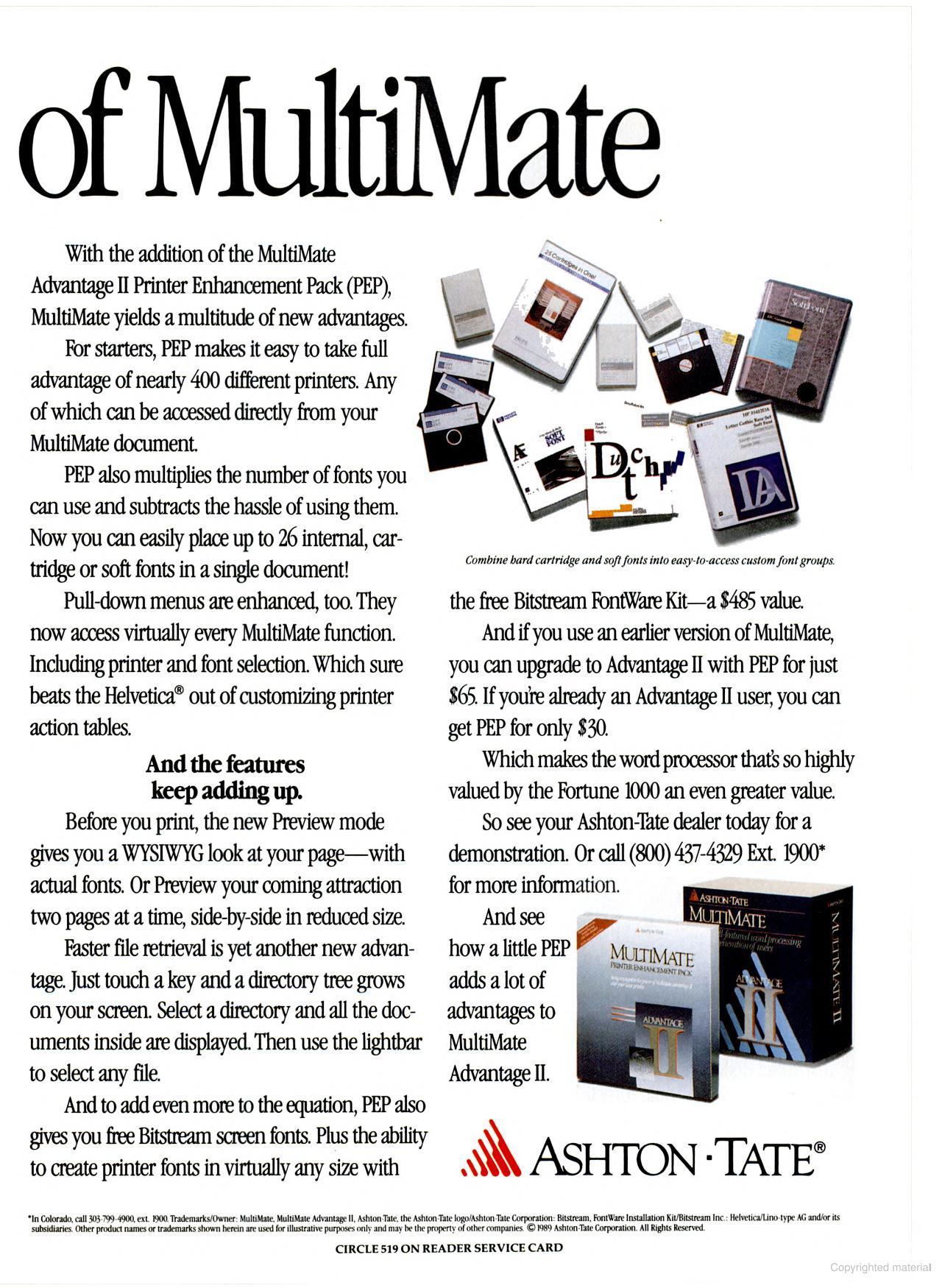
An advertisement for MultiMate II (August 1989)
MultiMate Advantage 3.60 shipped in 1986.
In October 1989, Ashton-Tate released MultiMate 4.0 as "a significant upgrade to MultiMate Advantage II, includes integrated graphics, electronic mail, and transparent document conversions."

MultiMate 4.0 for DOS retail box
One of the key strengths of MultiMate was its support for hundreds of different printers, and its high level of compatibility on PC clones and compatibles.
It survived as a product until Ashton-Tate was bought by Borland in 1991 for the sum of $437M. They primarily wanted Ashton-Tate for their installed base, not for MultiMate, and not for dBase (which by then was considered a legacy product).
